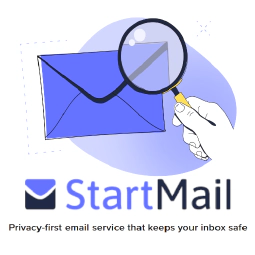Expert Tips for Writing a Powerful Resume

Table of Contents
Tips for Writing a Great Resume
A well-written resume is crucial for capturing the attention of potential employers and increasing your chances of securing a job interview. By following these tips, you can create a professional and compelling resume that effectively showcases your skills and experiences.
Use a Single Font and Maintain Uniform Styling and Structure
Consistency in font selection, styling, and structure is essential for creating a visually appealing and easy-to-read resume. Using a single font throughout your resume ensures a cohesive and professional look. Additionally, make sure to maintain uniform styling for headings, subheadings, and body text to enhance readability.
Types of Resumes and When to Use Them
There are several types of resumes, each serving a specific purpose. Understanding these types will help you choose the most suitable one for your situation:
Chronological Resume: This format lists your work history in reverse chronological order, starting with your most recent job. It highlights your career progression and is ideal for individuals with a stable employment history.
Functional Resume: A functional resume focuses on your skills and qualifications rather than your work history. It is useful if you have gaps in your employment or if you are changing careers.
Combination Resume: This format combines elements of both chronological and functional resumes. It emphasizes your skills and experience while also providing a chronological overview of your work history. It is versatile and can be used in various situations.
Choose the resume type that best showcases your qualifications and aligns with the job requirements.
Effective Use of Keywords
Keywords play a crucial role in getting your resume noticed by applicant tracking systems (ATS) and human recruiters. These systems scan resumes for specific keywords and phrases related to the job description. To optimize your resume for ATS, carefully review the job posting and incorporate relevant keywords throughout your resume, particularly in your skills and experience sections. However, make sure to use them naturally and avoid keyword stuffing.
Including References and Statements on Your Resume
Including references on your resume is no longer a common practice. Instead, it is recommended to have a separate list of references available upon request. This allows you to provide references when specifically requested by the employer.
Similarly, it is not necessary to include a personal statement or objective on your resume unless the job posting explicitly asks for it. Instead, focus on a professional summary or career highlights that highlight your key qualifications and achievements.
Handling Layoffs and Gaps in Your Resume
Layoffs and employment gaps can be challenging to address on your resume. To handle these situations effectively:
- Be honest and transparent about any gaps or layoffs. Employers appreciate honesty, and it is better to address these issues proactively.
- Highlight relevant skills and experiences gained during employment gaps, such as freelance work, volunteer positions, or personal projects. This demonstrates your continued professional growth and commitment.
Including Graduation Year and Certifications
Including your graduation year is optional and depends on various factors. If you are a recent graduate or if your education is directly relevant to the job you are applying for, it may be beneficial to include the graduation year. However, if you have extensive work experience, it is not necessary to include it.
When it comes to certifications, you should list certifications you are pursuing or in progress, even if you haven’t obtained them yet. This shows your dedication to professional development and can be viewed positively by employers.
Optimizing and Layout of Your Resume
To optimize your resume layout and make it visually appealing:
- Keep it concise and focused. Limit your resume to one or two pages, ensuring that it contains relevant and impactful information.
- Use bullet points to convey information in a clear and concise manner. This helps to highlight key achievements, skills, and responsibilities.
- Prioritize relevant information. Place the most important and relevant details, such as your work experience and qualifications, at the beginning of each section.
- Use white space strategically. Proper spacing between sections and paragraphs improves readability and helps to avoid a cluttered appearance.
- Choose an appropriate format. While PDF is the most common format, ensure compatibility by checking the job application instructions.
- Proofread and edit. Eliminate any typos, grammatical errors, or inconsistencies. Consider seeking feedback from others to ensure your resume is polished.
Remember that your resume should be tailored to the specific job you are applying for. Customize your content to match the requirements of the position and the company.
By following these tips, you can create a strong and impactful resume that effectively highlights your skills, experiences, and qualifications. Remember to keep it concise, use relevant keywords, and maintain a professional and consistent layout. With a well-crafted resume, you can increase your chances of standing out among other applicants and landing your dream job.
References:





